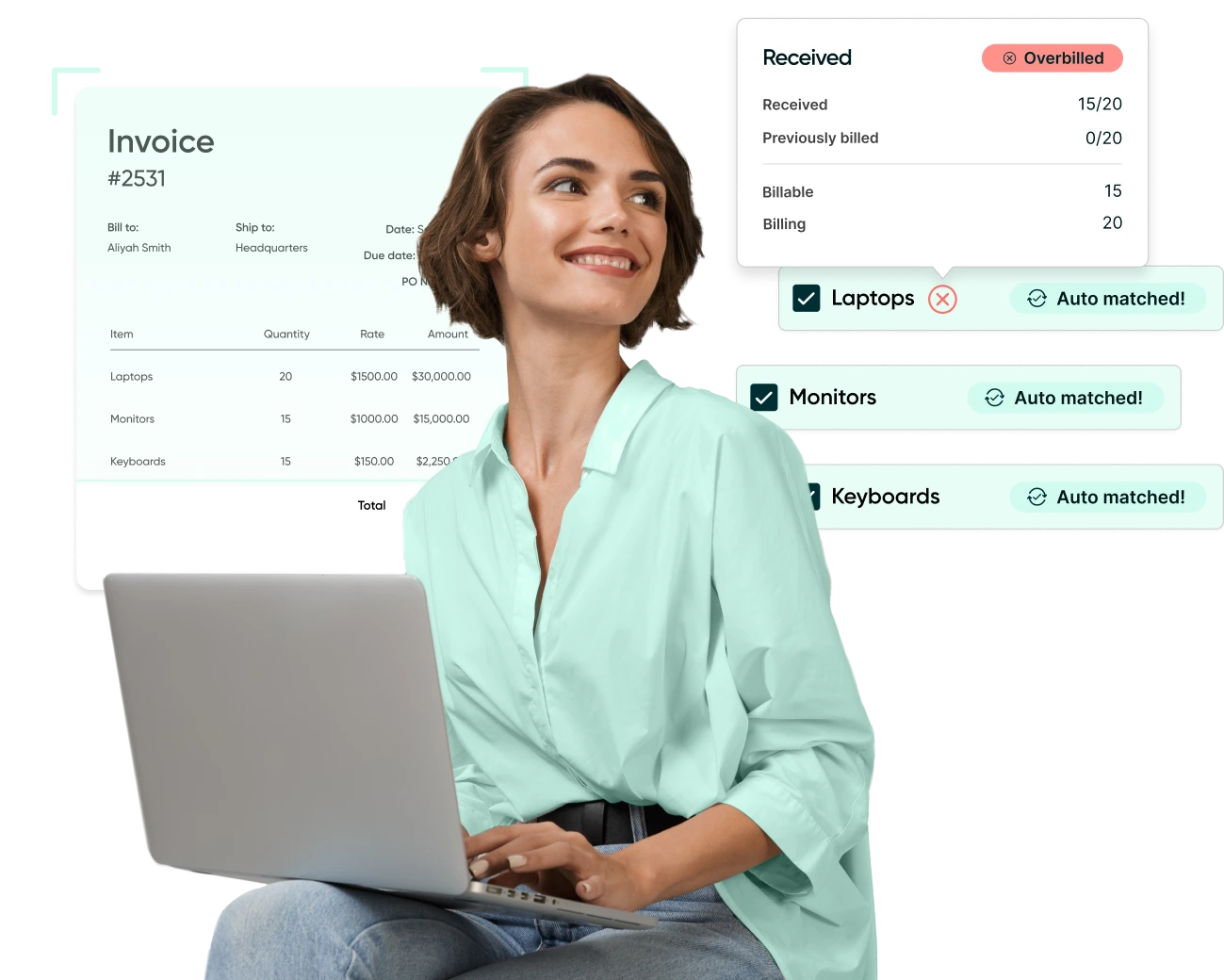
Accounts Payable: Everything You Need To Know
Mastering the nuances of accounts payable (AP) is not just a necessity—it’s a strategic advantage. At its core, accounts payable represents the obligations and debts a company owes to its suppliers or vendors, encapsulated through invoices that need to be settled within a specified period. This financial metric does more than just reflect liabilities; it’s a testament to a company’s reliability as a business partner and its efficiency in managing operational cash flow.
Why is efficient management of accounts payable so crucial for businesses? The answer lies in the ripple effects of AP on various facets of business operations. From fostering healthy vendor relationships through timely payments to optimizing cash flow management—efficient accounts payable processes ensure that businesses can sustain their operations without unnecessary financial strain. Moreover, in the broader spectrum of financial management, accounts payable acts as a key indicator of a company’s short-term financial health and liquidity, influencing credit ratings and the ability to secure financing.
However, understanding and managing accounts payable is no small feat. It involves a detailed comprehension of the financial obligations, the intricacies of invoice processing, and strategic payment planning—all of which demand meticulous attention to detail and a proactive approach to financial management. In the following sections, we delve deeper into the essence of accounts payable, unraveling its components, processes, challenges, and best practices to arm businesses with the knowledge they need to navigate this critical aspect of financial operations effectively.
Understanding Accounts Payable
Accounts payable (AP) is a term that resonates through the corridors of finance departments across industries, denoting the sum of a business’s short-term obligations to its vendors and suppliers. These obligations are typically the result of purchasing goods or services on credit, a common practice that facilitates smooth business operations. Understanding accounts payable is fundamental to grasping the ebb and flow of a company’s financial health.
Definition of Accounts Payable
At its simplest, accounts payable represents a company’s obligation to pay off a short-term debt to its creditors or suppliers. Recorded on the balance sheet under current liabilities, AP is a critical part of a company’s working capital management. This liability arises when a company receives goods or services before payment is made, reflecting a company’s use of credit as a financial strategy.
Difference Between Accounts Payable and Accounts Receivable
While accounts payable talks about the money a company owes, accounts receivable (AR) is the flip side, representing the money that others owe to the company. While AP is seen as a liability on the balance sheet, AR is considered an asset, as it is money expected to be received within a year. The management of both AP and AR is vital for maintaining a company’s liquidity, cash flow, and overall financial stability.
The Role of Accounts Payable within the Accounting Cycle
Accounts payable plays a pivotal role in the accounting cycle, serving as the bridge between receiving goods or services and the payment process. It starts with the procurement process and culminates in recording the liability in the general ledger, affecting both the balance sheet and the income statement. Efficient AP management ensures accurate financial reporting and analysis, critical for strategic decision-making and maintaining operational liquidity.
In essence, accounts payable is not just a measure of the money owed by a business; it is a reflection of the company’s ability to manage its obligations in a manner that sustains and propels its operations. A deeper understanding of AP processes, components, and implications can significantly enhance a business’s financial and operational strategy.
Key components of accounts payable

Navigating the accounts payable landscape requires an understanding of its fundamental components. These elements are crucial for ensuring the process is both efficient and effective, ultimately influencing a company’s cash flow and financial relationships. Let’s explore the core components of accounts payable:
Invoices
The cornerstone of the accounts payable process, invoices are formal requests for payment from vendors or suppliers for goods or services provided. They contain critical information such as the amount due, payment terms, and descriptions of the goods or services rendered. Managing invoices involves verifying their accuracy, ensuring they match purchase orders and delivery receipts, and processing them for payment within the stipulated terms.
Vendor Information
Accurate and up-to-date vendor information is vital for a smooth accounts payable process. This includes contact details, payment terms, and banking information. Effective vendor management ensures that payments are processed efficiently, disputes are minimized, and relationships with suppliers are maintained positively.
Payment Terms
Payment terms, negotiated between the buyer and the seller, dictate the timeframe within which payment should be made for the invoice amount. Common terms include net 30, net 60, or even early payment discounts. Understanding and adhering to these terms is crucial for managing cash flow, taking advantage of discounts, and avoiding late payment penalties.
Approval Workflow
Before a payment is processed, the invoice must go through an approval workflow. This ensures that the goods or services billed for have been received and meet the company’s standards. The workflow typically involves multiple departments, including procurement, receiving, and finance, and varies in complexity based on the size of the organization and the amount of the invoice.
By managing these components effectively, businesses can ensure a seamless accounts payable process. This not only helps in maintaining good vendor relationships but also in optimizing cash flow management, thereby contributing to the overall financial health of the company.
Accounts payable process
The accounts payable process is a series of steps that businesses follow to manage and pay off the debts owed to their suppliers and vendors for goods and services received. This process is not just a financial transaction but a multi-step workflow that ensures payments are accurate, timely, and efficiently processed. Here’s a breakdown of the typical accounts payable process:
1. Invoice Receipt
The process begins with the receipt of an invoice from a supplier. This invoice is a detailed statement that includes the quantity of goods received or services rendered, the price, terms of payment, and the due date. The invoice can be received in various formats, including paper-based and electronic.
2. Invoice Verification and Approval
Upon receipt, the invoice undergoes verification to ensure that the details match the purchase order and the goods receipt note (if applicable). This step is crucial to confirm that the business actually received the goods or services as agreed upon. Any discrepancies must be resolved before proceeding.
3. Data Entry and Record Keeping
After verification, the invoice details are entered into the accounting system. This step involves recording the amount to be paid and updating the accounts payable ledger. Proper record-keeping is essential for accurate financial reporting and analysis.
4. Invoice Approval for Payment
Once the invoice is recorded, it moves on to the approval process. Depending on the company’s internal policies, this may require approval from one or several authorities within the organization. The approval process ensures that the expenditure has been authorized and is within budget.
5. Payment Processing
Approved invoices are then scheduled for payment according to the agreed-upon terms. Payment methods may vary, including checks, bank transfers, or electronic payments. Timing is key here to take advantage of any early payment discounts or to avoid late fees.
6. Payment Reconciliation
After payment, the accounts payable ledger is updated to reflect the payment, and the transaction is reconciled against the bank statement. This final step ensures that the payment has been processed correctly and the company’s financial records are accurate.
Use of Automation and Software
Many businesses now leverage accounts payable automation software to streamline these steps. Automation can reduce human error, accelerate processing times, and improve overall efficiency. Software solutions can handle invoice scanning, data extraction, matching, approval workflows, and even directly integrate with bank accounts for payments, making the AP process more streamlined and less prone to error.
The accounts payable process is a critical component of a company’s financial operations, requiring meticulous attention to detail and efficient management. By understanding and optimizing this process, businesses can improve their financial health, maintain strong vendor relationships, and enhance operational efficiency.
Benefits of efficient accounts payable management
Efficient management of accounts payable is not merely about paying bills. It’s a strategic function that can have a significant impact on a company’s financial health, operational efficiency, and vendor relations. Here are some key benefits that underscore the importance of an efficient accounts payable management system:
Improved Vendor Relationships
Timely and accurate payments strengthen trust and reliability between businesses and their suppliers. Efficient AP management ensures that payments are made according to agreed terms, fostering goodwill and potentially leading to more favorable terms or discounts in the future. Strong vendor relationships are crucial for securing the supply of goods and services, negotiating prices, and ensuring quality.
Enhanced Cash Flow Management
Effective accounts payable processes allow businesses to optimize their working capital and cash flow. By leveraging payment terms effectively, companies can manage their outflows in a way that aligns with their cash inflows, ensuring that they maintain sufficient liquidity for operational needs and investment opportunities.
Cost Savings and Discounts
Many suppliers offer discounts for early payment, which can lead to significant cost savings over time. Efficient AP management enables businesses to take advantage of these discounts, reducing the overall cost of goods and services. Additionally, avoiding late payment penalties contributes directly to cost efficiency.
Compliance and Fraud Prevention
A streamlined accounts payable process improves compliance with regulatory requirements and internal policies, reducing the risk of financial penalties. Moreover, a well-structured AP process, particularly when automated, can help prevent fraud by enforcing controls and audit trails, thereby enhancing the security of financial transactions.
Strategic Financial Insights
Efficient AP management provides valuable insights into spending patterns, supplier costs, and opportunities for negotiation. This data can be instrumental in strategic planning, budgeting, and cost management efforts, helping businesses to make informed decisions about their financial strategies.
In summary, efficient accounts payable management transcends the basic function of paying bills; it plays a critical role in financial stewardship, operational strategy, and business development. Companies that invest in optimizing their AP processes can expect not only to see immediate financial benefits but also to lay the foundation for sustained success and growth.
Challenges in accounts payable

While the accounts payable process is fundamental to a business’s operations, it can also present a series of challenges that require strategic management and solutions. Addressing these challenges effectively is crucial for maintaining the efficiency and integrity of the AP function. Here are some common hurdles businesses might encounter:
Managing Paperwork and Data Entry
For many businesses, especially those that haven’t fully embraced digital transformation, accounts payable still involves a significant amount of paperwork. Managing physical invoices, purchase orders, and payment records can be cumbersome, time-consuming, and prone to errors. Manual data entry not only slows down the process but also increases the risk of inaccuracies, leading to potential discrepancies and disputes.
Ensuring Timely Payments
Keeping track of payment deadlines across numerous invoices and ensuring timely payments can be a complex task. Late payments can result in penalties, damage vendor relationships, and negatively impact credit terms. Conversely, paying too early may affect a company’s cash flow, underscoring the need for a balanced approach to managing payment schedules.
Dealing with Discrepancies and Disputes
Discrepancies between invoices, purchase orders, and received goods or services can lead to disputes with suppliers. Resolving these disputes requires time and resources, and until they are settled, can hinder the accounts payable process. Efficient dispute resolution mechanisms are essential to minimize their impact and maintain good supplier relations.
Keeping Up with Regulations and Compliance Issues
Regulatory compliance is a significant challenge for accounts payable departments. Tax laws, financial reporting standards, and industry-specific regulations can change frequently, requiring businesses to stay updated and ensure their AP processes comply. Non-compliance can result in financial penalties and damage to a company’s reputation.
Leveraging Technology and Automation
Implementing and leveraging technology solutions for accounts payable automation is a challenge for some businesses, particularly small to medium-sized enterprises (SMEs) with limited resources. However, the transition to digital and automated AP processes is crucial for enhancing efficiency, accuracy, and fraud prevention.
Despite these challenges, addressing them proactively and strategically can turn accounts payable from a potential bottleneck into a streamlined, efficient process that contributes positively to the company’s financial health and operational efficiency.
Best practices in accounts payable
To navigate the complexities of accounts payable and harness its full potential for contributing to a business’s success, adopting certain best practices is essential. These practices not only address the challenges previously mentioned but also enhance operational efficiency, financial integrity, and strategic decision-making. Here are some best practices for managing accounts payable:
Automation and Digital Transformation
Implementing accounts payable automation software can drastically reduce manual tasks, minimize errors, and speed up the entire process from invoice receipt to payment. Automation solutions can handle invoice scanning, data entry, matching, approval workflows, and even facilitate electronic payments, thereby improving accuracy and efficiency.
Regular Audits and Reconciliations
Conducting regular audits of the accounts payable process helps identify inefficiencies, discrepancies, and instances of non-compliance. Regular reconciliation of the AP ledger with vendor statements and the general ledger ensures accuracy in financial reporting and helps detect fraudulent activities early.
Vendor Management Strategies
Developing strong relationships with suppliers includes maintaining open lines of communication, regular performance reviews, and negotiations to improve payment terms. A structured vendor management strategy can lead to more favorable terms, discounts, and improved service quality.
Training and Development for AP Staff
Investing in the training and development of AP staff is crucial for ensuring that they are well-versed in best practices, the latest technologies, and regulatory requirements. A knowledgeable AP team can improve process efficiency, compliance, and adaptability to change.
Centralizing Accounts Payable Processes
Centralizing the AP function can help standardize processes, consolidate purchasing power, and improve control over cash flow. A centralized approach allows for better visibility into payable obligations and can streamline operations, making it easier to implement best practices and automation tools.
Strategic Payment Planning
Effective cash flow management involves strategic planning of payments to take advantage of early payment discounts and avoid late fees. This includes scheduling payments to optimize working capital without jeopardizing supplier relationships.
Embracing Cloud-Based Solutions
Cloud-based AP solutions offer scalability, remote accessibility, and integration with other financial systems, facilitating a more cohesive financial management ecosystem. They also provide enhanced security features and regular updates to ensure compliance with the latest financial regulations.
By adhering to these best practices, businesses can transform their accounts payable processes into a strategic asset that supports financial stability, operational efficiency, and long-term growth.
The future of accounts payable
The future of accounts payable (AP) is poised at the intersection of technology, process innovation, and strategic financial management. As businesses continue to adapt to the digital era, the AP function is undergoing a transformation that promises not only increased efficiency and accuracy but also strategic value to the organization. Here are key trends and technologies shaping the future of accounts payable:
Automation and AI Integration
Automation will continue to be a cornerstone of AP processes, but with a growing integration of artificial intelligence (AI) and machine learning (ML), these systems will become smarter. AI can enhance invoice processing through natural language processing (NLP) for better data extraction and cognitive automation for decision-making processes, significantly reducing manual intervention and improving cycle times.
Blockchain Technology
Blockchain offers a secure and transparent way to conduct transactions, providing an immutable ledger that can revolutionize how payments are processed and verified in accounts payable. This technology can help eliminate fraud, reduce processing times, and improve trust between trading partners through smart contracts that automatically execute payments upon meeting agreed conditions.
Increased Focus on Data Analytics and Insights
With more advanced AP solutions, businesses will have access to deeper analytics and insights into their spending patterns, vendor performance, and potential bottlenecks. This data-driven approach will enable more strategic decision-making, helping companies to optimize their spending and improve their negotiation leverage with suppliers.
Enhanced Vendor Relationships through Portal Technology
Vendor portals are becoming an essential tool for improving communication and collaboration between businesses and their suppliers. These platforms can streamline the submission of invoices, provide real-time updates on payment status, and facilitate document exchange, thereby enhancing transparency and trust.
Regulatory Compliance and Security
As digital processes become the norm, regulatory compliance and cybersecurity will become increasingly critical. Future AP processes will need to incorporate advanced security measures to protect against fraud and cyber-attacks, along with ensuring compliance with evolving financial regulations and standards.
Sustainability and Corporate Social Responsibility
Digital and automated AP processes contribute to sustainability by reducing the need for paper-based processes. Furthermore, AP data can help companies make more socially responsible spending decisions by identifying opportunities to work with vendors who prioritize sustainability.
As we look to the future, it’s clear that the role of accounts payable within organizations is set to become more strategic. The adoption of new technologies and approaches will not only streamline traditional AP functions but also provide businesses with greater financial insights, improved vendor relationships, and enhanced operational efficiencies. The evolution of accounts payable from a back-office function to a strategic component of business finance is well underway.
Accounts Payable FAQs
Conclusion
Accounts payable (AP) is a fundamental aspect of business finance that extends beyond the mere obligation to pay bills. It encompasses a complex ecosystem involving invoice processing, vendor management, financial planning, and strategic decision-making. As we’ve navigated through the intricacies of AP, it’s become evident that efficient management of this function is not just beneficial but essential for maintaining financial stability, fostering strong vendor relationships, and enhancing operational efficiency.
The journey through the present landscape of accounts payable has highlighted the significance of adopting best practices such as automation, digital transformation, and strategic payment planning. These practices not only address the challenges inherent in AP processes but also pave the way for optimizing cash flow, achieving cost savings, and ensuring compliance.
Looking ahead, the future of accounts payable is bright with technological advancements and innovation. The integration of artificial intelligence, blockchain technology, and data analytics promises to revolutionize AP processes, making them more efficient, secure, and strategically valuable. As businesses continue to embrace these technologies, the role of AP is set to evolve from a back-office function to a key player in financial decision-making and strategic business planning.
In closing, understanding and efficiently managing accounts payable is crucial for any business aiming to succeed in the dynamic landscape of modern finance. By staying informed about best practices and emerging trends, businesses can ensure that their AP processes are not just a routine administrative task but a strategic asset that contributes to their overall success and growth.

Webinar: Automate Your AP Processes with Procurify
Learn how AP automation enhances the efficiency, accuracy, and financial visibility of your accounts payable workflows.
